1816

James Noble of Brookeville and Waller Taylor of Vincennes took the oath of office as Indiana's first two senators. Class selection was determined by lot, with Noble drawing Class 3, a four-year term ending March 3, 1821, and Taylor drawing Class 2, with a two-year term ending March 3, 1819.
1842

Senator Albert S. White of La Fayette became chairman of the Committee on Indian Affairs, a position he held until 1845.
1848

Senator Edward A. Hannegan of Covington became chairman of the Committee on Foreign Relations, a position he held until 1849.
1854
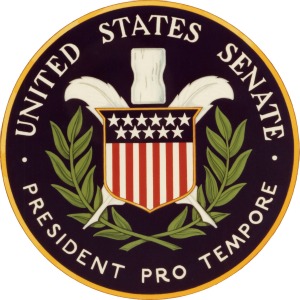
Jesse D. Bright of Madison was elected to the first of three separate terms as president pro tempore of the Senate.
1859

The Senate resolved a contested election case that pitted Jesse D. Bright and Graham N. Fitch of Logansport against Harry S. Lane and William M. McCarty. Following a dispute over the conduct of the 1857 election, the Senate voted to allow Fitch and Bright to retain their seats.
1862
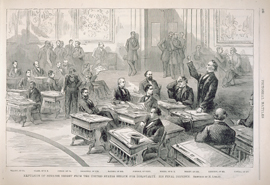
Senator Jesse D. Bright was expelled from the U.S. Senate for support of the Confederacy during the Civil War.
1869

Schuyler Colfax presided over the Senate as the 17th vice president of the United States. Born in New York City, but raised in New Carlisle, Indiana, Colfax enjoyed a long and distinguished career in public office, including representing his Indiana district in the U.S. House of Representatives from 1855 to 1869, and as Speaker of the House from 1863 to 1869.
1871

Senator Oliver Hazard Perry Throck Morton of Indianapolis became chairman of the Committee on Agriculture (today's Committee on Agriculture, Nutrition, and Forestry), a position he held until 1872.
1879
Richard J. Bright began service as the Senate's sergeant at arms, a position he held until December 18, 1883, and again from August 8, 1893, to February 1, 1900.
1885

Thomas A. Hendricks of Indianapolis presided over the Senate as the 21st vice president of the United States. Born in Ohio, but raised in Indiana, Hendricks practiced law and served in state government before becoming a U.S. representative in 1851, and then a U.S. senator in 1863. Following one six-year term in the Senate, he served as governor of Indiana before his election as vice president in 1884.
1888

The Senate voted to allow David Turpie of Indianapolis to retain his seat, following a contested election over issues of electoral misconduct.
1889

Benjamin Harrison of Indianapolis became the 23rd president of the United States, after serving in the U.S. Senate from 1881 to 1887.
1890
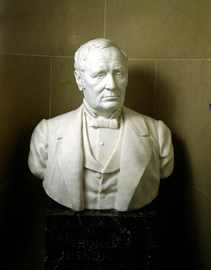
A marble bust of former senator and vice president Thomas A. Hendricks, sculpted by Ulrich S.J. Dunbar, was placed in the Senate Chamber as part of the Vice Presidential Bust Collection.
1893

Senator Daniel W. Voorhees of Terre Haute became chairman of the Committee on Finance, a position he held until 1895.
1897
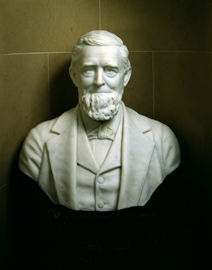
A marble bust of former representative and vice president Schuyler Colfax, sculpted by Frances Murphy Goodwin, was placed in the Senate Chamber as part of the Vice Presidential Bust Collection.
1900
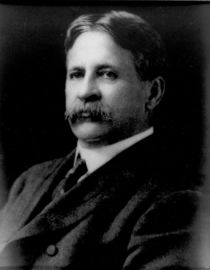
Daniel M. Ransdell began service as the Senate's sergeant at arms, a position he held until August 26, 1912.
1900

A marble statue of Oliver Hazard Perry Throck Morton, sculpted by Charles H. Niehaus and standing 7 feet 6 inches tall, was donated to the Capitol, becoming Indiana's first contribution to the National Statuary Hall Collection. A circuit court judge, lieutenant governor of Indiana, and U.S. senator from 1867 to 1877, Morton was a staunch supporter of President Abraham Lincoln and the Union cause.
1905

Charles W. Fairbanks of Indianapolis presided over the Senate as the 26th vice president of the United States. Born in Ohio, Fairbanks established his law practice in Indianapolis in the 1870s. At the time he became Theodore Roosevelt's vice-presidential running mate in 1904, Fairbanks was serving as a U.S. senator from Indiana.
1908
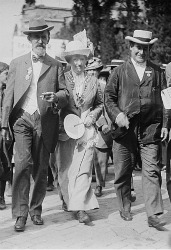
Senator John Worth Kern of Indianapolis ran unsuccessfully for vice president on the Democratic ticket with William Jennings Bryan. They lost to Republicans William Howard Taft and James Sherman.
1909
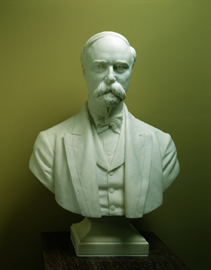
A marble bust of former senator and vice president Charles W. Fairbanks, sculpted by Franklin Bachelder Simmons, was placed in the Senate Chamber as part of the Vice Presidential Bust Collection.
1910
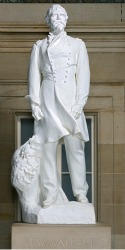
A marble statue of General Lewis Wallace (1827-1905), sculpted by Andrew O'Connor and standing 6 feet 10 inches tall, was donated to the Capitol, becoming Indiana's second contribution to the National Statuary Hall Collection. A successful lawyer, soldier, and diplomat, Wallace was also the author of the best-selling novel, Ben Hur.
1912
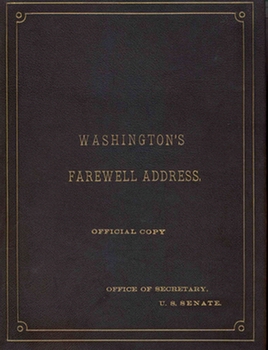
Senator John Worth Kern delivered George Washington's 1796 Farewell Address on the floor of the Senate Chamber, a tradition dating to 1862.
1913

Thomas R. Marshall presided over the Senate as the 28th vice president of the United States. Born in North Manchester, Indiana, Marshall practiced law before entering government service. In 1912 he was elected vice president on the Democratic ticket with Woodrow Wilson. The Wilson-Marshall ticket was re-elected in 1916, and Marshall served as vice president until 1921.
1913

Senator John Worth Kern was elected chairman of the Democratic Conference, a position he held until 1917
1914

Incumbent senator Benjamin Shively of South Bend became Indiana's first directly elected senator after passage of the Seventeenth Amendment.
1920
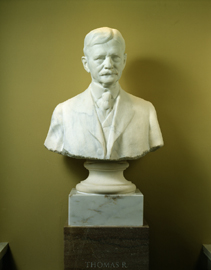
A marble bust of Vice President Thomas R. Marshall, sculpted by Moses A. Wainer Dykaar, was placed in the Senate Chamber as part of the Vice Presidential Bust Collection.
1925

Senator James E. Watson of Rushville served as chairman of the Committee on Interstate Commerce (today's Committee on Commerce, Science, and Transportation), a position he held until 1928.
1925
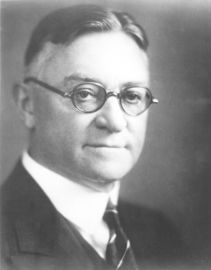
Edwin Poper Thayer began service as the secretary of the Senate, a position he held until March 9, 1933.
1929
Senator James E. Watson was elected chairman of the Republican Conference, a position he held until 1933.
1938

Senator Sherman Minton of New Albany was elected Democratic Party whip, a position he held until 1941.
1939
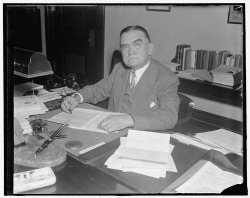
The Senate voted to allow Senator Frederick Van Nuys of Indianapolis to retain his seat following a contested election over issues of campaign irregularities.
1941

Senator Frederick Van Nuys served as chairman of the Committee on Judiciary, a position he held until 1945.
1953

Forest A. Harness began service as the Senate's sergeant at arms, a position he held until January 4, 1955.
1953

Senator William E. Jenner of Bedford became chairman of the Committee on Rules and Administration, a position he held until 1955.
1953

Senator Homer E. Capehart of Washington became chairman of the Committee on Banking and Currency (today's Committee on Banking, Housing, and Urban Affairs), a position he held until 1955.
1971

Senator R. Vance Hartke of Evansville served as chairman of the Committee on Veterans Affairs, a position he held until 1977.
1972
A long recount of ballots from the 1970 election was finally completed, allowing Senator R. Vance Hartke to retain his seat. The election had been contested by his opponent, Richard L. Roudebush.
1976

Senator R. Vance Hartke delivered George Washington's 1796 Farewell Address on the floor of the Senate Chamber, a tradition dating to 1862.
1978

Senator Birch E. Bayh of Terra Haute served as chairman of the Select Committee on Intelligence, a position he held until 1981.
1982
Senator Richard G. Lugar of Indianapolis was elected chairman of the Republican Senatorial Campaign Committee, a position he held until 1985.
1985
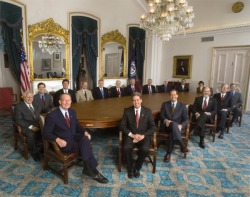
Senator Richard G. Lugar became chairman of the Committee on Foreign Relations, a position he held until 1987, and again from 2003 to 2007.
1989

J. Danforth Quayle presided over the Senate as the 44th vice president of the United States. Born in Indianapolis, Quayle practiced law in Indiana prior to being elected to the U.S. House of Representatives in 1976 and then to the Senate in 1980. At the time of his election as vice president, on the Republican ticket with George H. W. Bush, Quayle was in his second term as a U.S. senator.
1995
Senator Richard G. Lugar became chairman of the Committee on Agriculture, Nutrition and Forestry, a position he held until 2001.
1996

Senator Richard G. Lugar became Indiana's longest-serving senator, surpassing Daniel Voorhees' record of 19 years, 3 months, and 26 days. Lugar went on to serve a total of 36 years, leaving office in 2013.
1998

Senator Daniel R. Coats of Fort Wayne received the Golden Gavel Award for presiding over the Senate for 100 hours in a single session.
2003
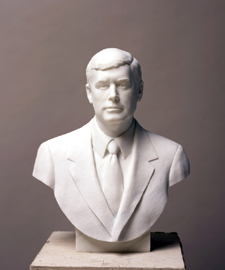
A marble bust of former U.S. senator and vice president J. Danforth Quayle was unveiled in the Rotunda of the U.S. Capitol as part of the Vice Presidential Bust Collection.
2017

Mike Pence became the 48th vice president of the United States. Pence represented Indiana in the U.S. House of Representatives from 2001 to 2013 and then served as governor of Indiana from 2013 to 2017. He served as vice president from 2017 to 2021.
2018

Senator Todd Young of Indianapolis was elected chairman of the Republican Senatorial Campaign Committee for the 116th Congress.
2020

Senator Michael Braun of Jasper received the Golden Gavel Award for presiding over the Senate for 100 hours in a single session.
2021
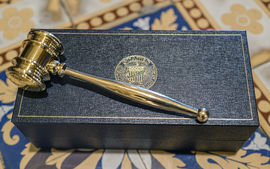
Senator Todd Young received the Golden Gavel Award for presiding over the Senate for 100 hours in a single session.